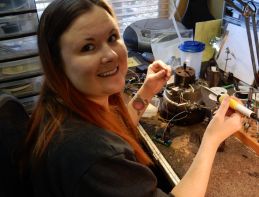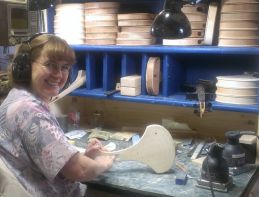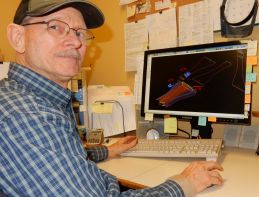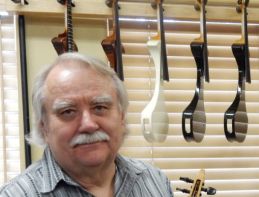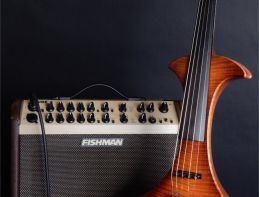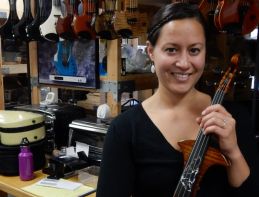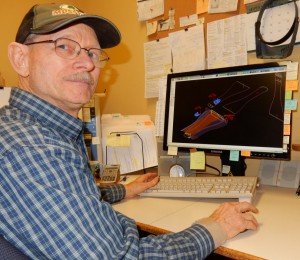 Phil was born and raised in the Cody area of Wyoming. His parents were some of the last homesteaders in the United States. Growing up farming and ranching on a homestead instilled a good deal of practicum at an early age, for both he and his brother. Their grandfather was a blacksmith and tinsmith and their uncle taught engineering. Phil’s brother became a research physicist while Phil got his degree in Civil Engineering from MSU in Bozeman. During his college years Phil took all the available musical instrument repair classes, while at the same time working as an electronic technician and a professional jeweler. Following graduation he spent time in the Middle East as an offshore oil construction engineer, eventually finding his way back to Montana, where he spent the next few years ranching.
Phil was born and raised in the Cody area of Wyoming. His parents were some of the last homesteaders in the United States. Growing up farming and ranching on a homestead instilled a good deal of practicum at an early age, for both he and his brother. Their grandfather was a blacksmith and tinsmith and their uncle taught engineering. Phil’s brother became a research physicist while Phil got his degree in Civil Engineering from MSU in Bozeman. During his college years Phil took all the available musical instrument repair classes, while at the same time working as an electronic technician and a professional jeweler. Following graduation he spent time in the Middle East as an offshore oil construction engineer, eventually finding his way back to Montana, where he spent the next few years ranching.
In the spring of 1988 it was decided that Gibson acoustic guitar production would move to Montana. The challenge for Steve Carlson was not only setting up production for the then current line of Gibson acoustics, but also recreating and reviving the many historic Gibson models. One aspect of taking the quality of Gibson acoustics to new highs was dealing with the amount of pearl inlay so uniquely charactertistic of Gibson guitars. Steve’s vision was to setup and produce these inlay patterns in house, and even though CNC technology was emerging into the industry at the time, cutting shell this way would be revolutionary. On one of his ‘used equipment junkets’ Steve encountered a small CNC that seemed exactly right for the shell cutting ‘experiment’. With this small CNC back in Montana, the challenge became finding the time to work on this singular component of the Gibson acoustic startup, and then in walks Phil Brug. Phil’s mechanical background combined with both AutoCad and LISP experience seemed perfectly matched to the task of setting up and testing CNC shell cutting.
The fortunate conclusion to the above story is that during the next few months, Steve was so busy with all the other aspects of the Gibson acoustic guitar launch that Phil was completely left to his own devices to find success with the CNC cutting of shell inlay. This singular success on Phil’s part launched a working relationship between Phil and Steve that has not only endured the last 26 years, but flurished.
In 1996 Phil joined Steve’s engineering firm NC Solutions, where he worked both building and documenting the manufacture of the Apex7 CNC machining center Steve had designed and was producing. Over the next few years Phil’s expertise expanded to include responsibility for the creation and maintenance of customer’s 3D parts geometry the firm had built their reputation on. Ironically, the last turnkey ‘Apex7/Parts Fixturing/Parts Programming’ project was done between the years 2000-2004 for ZETA Music. After that turnkey manufacturing cell was delivered in 2004, NC Solutions emphasis switched entirely to O.E.M. parts production and engineering services. Phil’s expertise at CAD/CAM manufacturing continues to expand, having now drawn and produced every acoustic/electric neck and body conceivable; including guitars, basses, ukes, banjos, mandolins, violins, etc. Phil considers “Engineering as a diagnosis, not a profession”.
“In business . . . to share visions, discuss options, walk away, then return and find your highest expectations met . . . to have that occur as a matter of routine is unheard of, yet it is my experience on a daily basis when working with Phil Brug. A trusted friend who gets the job done, whatever it is.”
Steve Carlson




